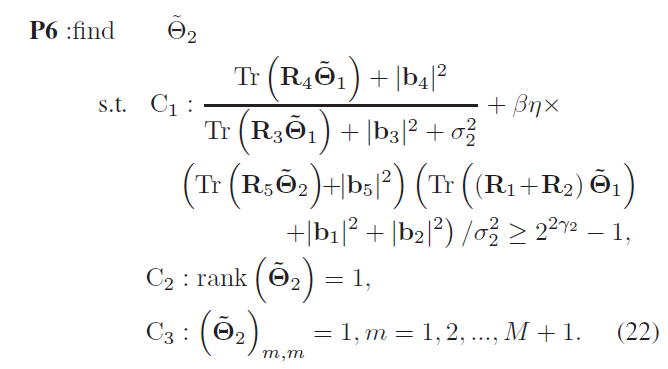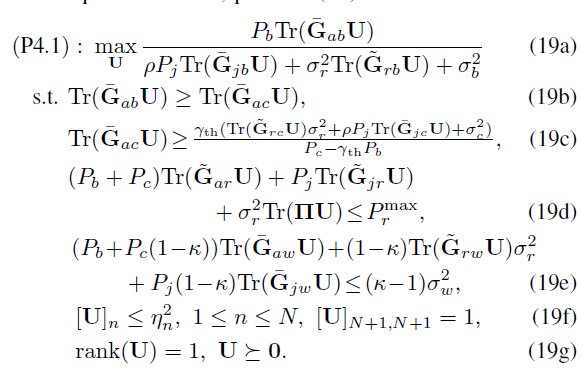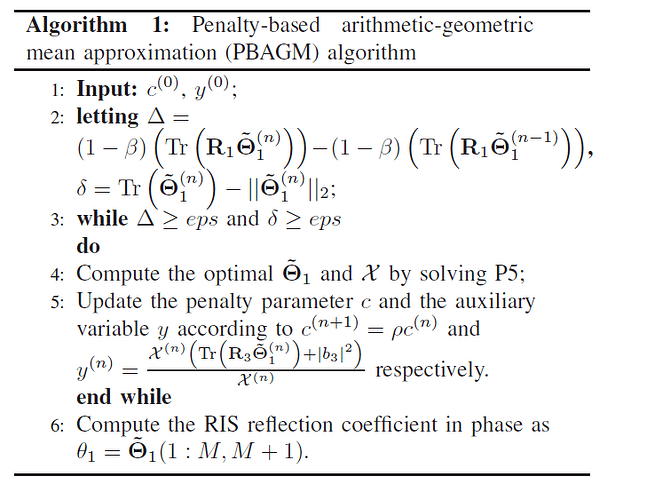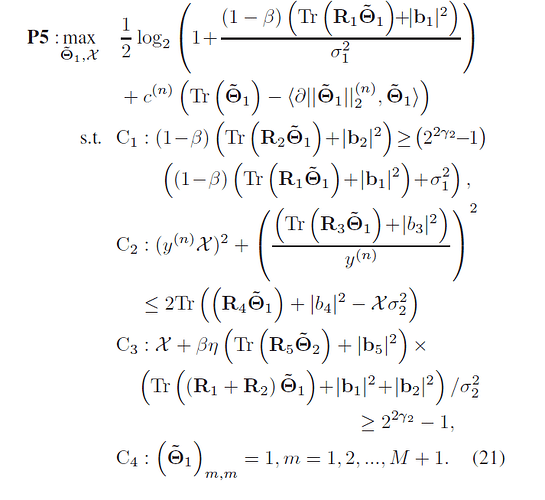
I don’t see \chi anywhere explicitly in the objective function. Do some of the symbols in the objective function depend on \chi? We are not mindreaders, so you’ll have to tell us. Or perhaps \chi only appears in constrains (if there are any) which you haven’t shown?
Presuming that everything other than the stated optimization variables are input data, which I don’t know to be true, the log term can be entered essentially “as is” except for using log(...)/log(2) instead of log2.
As for the term in the <...,...>, is that trace of inner product? Is the \partial some kind of gradient operator I have no idea, so you have to be very explicit about all of it. I have no idea what superscript (n) means. Make sure you thoroughly understand exactly what the objective function is, to include the answers to all my questions. It will not serve you well to lift an optimization problem statement from a book or paper without thoroughly understanding it. That would be true no matter what optimization tools you used. Given your use of CVX, you have the extra obligation of proving your optimization problem is convex Given my lack of understanding of what your problem is, I don’t know whether it is convex, but you need to.
I need to implement this algorithm attached in the image and solve the optimization problem P5 using CVX Matlab but i don’t know how to write the trace of inner product in CVX.
Thanks in advance.
Please be explicit as to the term you are having difficulty with. A term of the form trace(R*theta) in which theta is the only variable, can be entered directly as such because everything involved is affine in the optimization variables. Is there some trace in the problem which is not affine?
As for \partial, I have no idea what that is (some kind of partial derivative?), but presumably you do, because it is “your” problem, lifted from a paper or book., which of course you understand intimately before you attempt to implement it.
Dear Mr. Mark,
yes, the sign ∂ is the derivative of the second norm of the matrix Theta with the matrix Theta itself. how can i write the term <∂||Theta||2,Theta>in cvx Matlab.
CVX doesn’t know anything about derivatives. You need to determine the explicit formula for it. It’s not the role of this forum to understand notation and implicit relationships, and decipher formulas in papers. That is your responsibility.
If the optimization problem is not convex, CVX is not a suitable tool for it.

Dear Mark,
could you please help me to write the 3rd constraint on CVX Matlab?

Can we solve this problem using CVX with no objective function?
What is the difficulty with the 3rd constraint of P5? Presuming all the symbols which are not listed as variables are input data, the LHS is a convex quadratic which can be entered directly as is; and the RHS is affine, so also can be entered directly as is.
As for P6, the rank constraint is non-convex, so can’t be used in CVX unless relaxed.
It appears you need to re-read the link provided earlier in this topic.
P5, there is an error, the left hand side is complex affine because H1 and W1 are complex matrices
have you figured out what, if any, convex constraints that corresponds to? That is your responsibility. it is “your” problem, so you should understand it.

In the attached image, how to write constraint 19f, knowing U is a matrix which i need to compare its absolute with scalar?
I don’t know what as single subscript n means here. But abs is applied element-wise to all (real or complex) elements of a vector or matrix argument. For example, abs(U) <= 1 constrains abs of each element to be <= `. I’ll leave you to figure our what the indexing is supposed to be.

